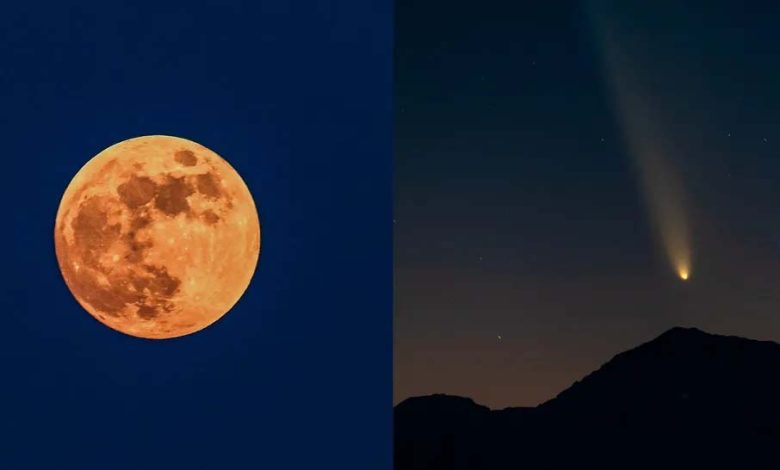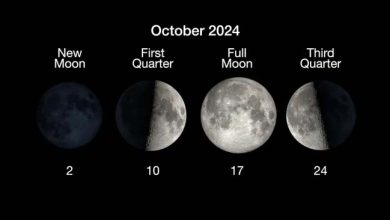Hunters Moon supermoon meeting comet Tsuchinshan-Atlas today

Technology: October’s full Hunter Moon, the biggest supermoon of 2024, will rise in the sky opposite bright comet C/2023 A3 (Tsuchinshan-Atlas). The moon officially becomes full today (Oct. 17) at 7:26 a.m. EDT (1126 GMT), but it will remain full to the naked eye all night. After the sun sets tonight, the photogenic Comet Tsuchinshan-Atlas will shine in the western sky. If viewing conditions aren’t ideal in your area or if you can’t get outside to see the pair on opposite sides of the sky tonight, you’re in luck: You can see both in a free livestream thanks to the Virtual Telescope Project. Astronomer Gianluca Masi will be livestreaming telescope observations of both the full Hunter Moon and Comet Tsuchinshan-Atlas starting at 1:30 p.m. EDT (1730 GMT) today. Courtesy of the Virtual Telescope Project or watch it live on the project’s YouTube channel.
The October 2024 Hunter Moon will be the biggest full moon of the year because of its proximity to Earth. On Wednesday evening (Oct. 16) the moon reached its closest point to Earth, perigee, in its slightly elliptical or oval orbit, just 221,938 miles (357,174 kilometers) from our planet. The result is that the Hunter Moon is colloquially known as a “supermoon,” meaning it appears about 14% larger than usual in the sky. Because the full moon phase and the moment of perigee happened within just a few hours, October’s supermoon will be the biggest of 2024.
Tonight, the moon will rise in the east as the sun sets. Because a full moon occurs when the moon and sun are opposite each other and Earth is in between, the full moon always rises in the east, exactly at the moment the sun sets in the west. Comet C/2023 A3 (Tsuchinshan-ATLAS) will also be visible with the Sun setting in the western sky. The comet is putting on quite a show for astrophotographers this year – even in space! The comet passed its closest point to Earth on October 12 and will continue to rise higher in the sky, despite fading, over the next week before it becomes invisible to the naked eye.





